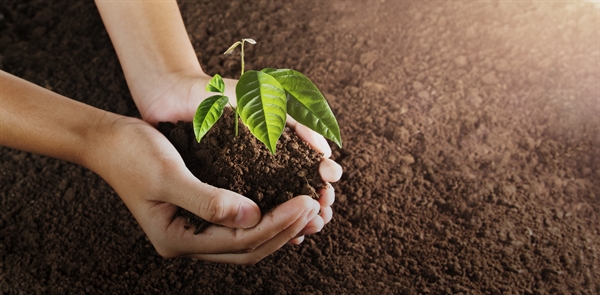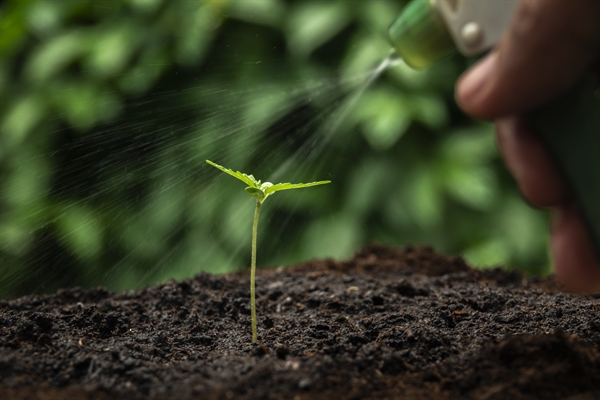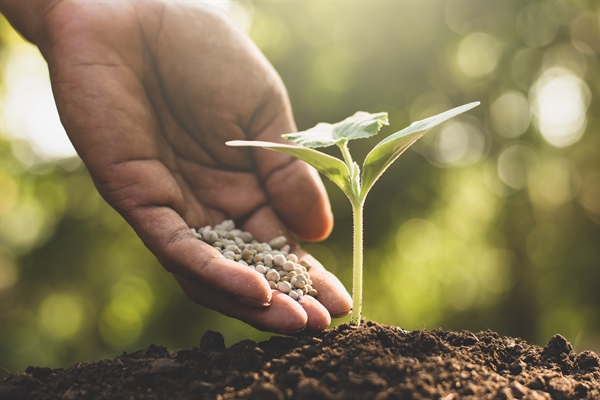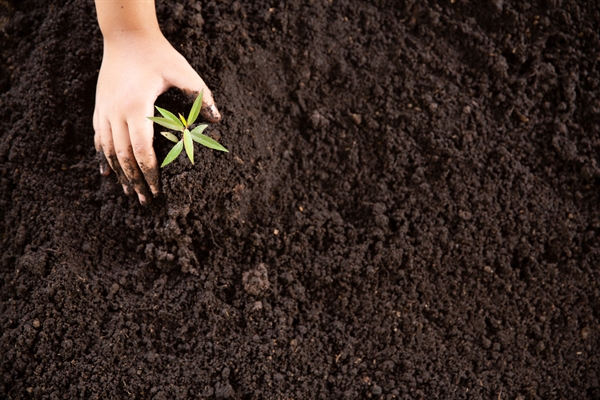

In Bridgewater, NJ, Jabari Huff and Jonathan Guerrero Learned About Are Grass Clippings Good For The Garden
Turf experts frequently recommend “topdressing” yards with a thin layer of compost. The material is spread one-quarter to half inch thick in spring or fall, depending on regional environment and soil. * Garden compost improves the moisture-holding capability of the soil, includes nutrients, and feeds soil microorganisms. These microbes are crucial to the complex process that makes food available to yard plants.
Compost spread on top of thatch can likewise speed thatch decay and remove the labor of mechanical elimination. However there is an issue: Garden compost quality varies. Whether you buy it by the bag, pick it up at the municipal leaf dump or have it provided by the lawn, how can you know that it is “great” garden compost? Think about these questions: Is it at the completed stage?Does it consist of unwanted ingredients such as dyes or constructing materials?Are there practical weed seeds in the material?Could it have pesticide residues? The parent products and the composting process both affect the quality of the end product.
” That is to use compost that has undergone compost-specific testing.” Recognizing the problem this produces for customers and the land care industry alike, the USCC started the Seal of Screening Guarantee (STA) in 2000. STA is a screening, labeling, and disclosure program designed to bring exposure into the world of compost sales.
STA looks at 14 compost characteristics consisting of raw material, salts, p H, significant nutrients, pathogens, metals, stability, and maturity. Rattie states among the most significant issues is the existence of pesticide residuals. Reliable compost, however, carries little of this threat. “A proper composting system destroys the overwhelming majority of pesticides and herbicides,” states Rattie.
” The bulk of STA individuals sell in bulk through regional landscape supply lawns, garden centers, and through direct sales,” states Rattie. USCC uses numerous resources to find STA garden compost and a calculator to assist identify the quantity: Discover a list of 200+ STA participants Check out Purchase Compost.com and use the USCC’s compost calculator on the upper right of the homepage.
” Bagged garden compost materials just one cubic foot of product,” he says. “It takes 27 bags to get one cubic backyard. Do the math!” When we used the compost calculator used by the USCC at Buy Compost.com, we found that a one-quarter inch layer on a quarter-acre lawn (10,000 square feet) needs 7.7 cubic backyards or 5.9 cubic meters of garden compost.

” Golf course and ball field superintendents having been utilizing this technique effectively for several years,” he says. Garden compost is spread in spring or fall, but there are essential subtleties. In cool-season locations, the spring application is normally lighter and the fall application heavier. In the south, topdress warm-season turfs in early spring.
Basically, compost is decomposed natural matter however that doesn’t discuss much. To a romantic, compost is the really essence of life. The living aspect of the soil accountable for a myriad of the most sublime and intricate procedures known to man. Organisms nourishing organisms all the way up the food cycle from easy bacterium to crops to humans, none of it possible without decayed organic matter: compost.
In 27253, Deon Oneal and Elianna Martin Learned About Putting Grass Clippings In Garden
It is the things of life, bristling with bacteria that enter into the nutrition cycle of plants. Garden compost can be made little scale; in a backyard or underneath a sink, or big scale; in giant windrows turned by front-end loaders or other specific devices. Either way, it is all about breaking down raw material till all that is left is an abundant, dark, moldy, nearly sweet-smelling substance with the consistency of potting soil.
Hay, straw, fish gurry, animal manure, twigs, tree bark, and seashells are frequently used to comprise the structure of garden compost. The compost is normally combined 2 parts dry material (bark, leaves) to one part damp or green product (turf clippings, fish gurry) and left in either containers, stacks or windrows to break down.
Decaying compost should remain uniformly moist however not wet. Depending on the type of composting system, it can take anywhere from a couple of months to a year or more to end up the process, sometimes referred to as “cooking.” Actively decaying garden compost is said to be cooking due to the fact that temperature levels can reach anywhere from 120 to 160 F.
Warning Compost is ruled out properly cooked unless it has reached these heats long enough to sterilize weed seeds and remove harmful bacteria found in some manures. Ultimately, more complicated organisms like amoeba and nematodes take in the simpler germs and fungi, the stack starts cooling while the nutrients in the compost become increasingly more focused from their waste items and more decomposition.
Compost that is not entirely completed can have an ammonia smell to it and might not provide the wanted effects or it can even hurt the plants as it continues to prepare. It’s the microorganisms in garden compost that provide it its magic. Countless microorganisms go to operate in the soil, cycling nutrients and making them offered to be taken up by the plant.

Compost is also packed with micronutrients and other intricate biology that is incredibly useful for plant growth. Compost adds life to the food web, ultimately resulting in much healthier yard. Excellent quality compost consists of a high portion of finished raw material with the rest being comprised by smaller incomplete raw material like wood chips, sawdust, seas shells and mulched leaf matter.
Compost can be spread manually with shovels by utilizing a tossing action to try and accomplish a layer about 1/4″ thick. It can be ravelled with a rake to mix it in a little much better and after a number of days it will not even be noticeable on the surface area of the yard.

Applying the compost instantly after seeding and aerating is an excellent method to incorporate the garden compost straight into the soil and supply a dive start for seedlings. Simply doing this one or two times a year will benefit the yard more than lots of quick-fix products that are convenient however not always the very best option.
In Andover, MA, Josh Snyder and Kaylen Hunt Learned About Lawn Clipping Bag
Ideally, a yard would be topdressed with garden compost a number of times a year but a composting program will ultimately be dictated by money and time. The target for a composting program should for a lawn’s soil to include 5% raw material. It seems like a small amount however it can take years to build up in specific soils.
Once natural matter starts to build up in the soil, topdressing can be cut down to once or twice a year. Likewise, the requirement to fertilize and water the lawn will begin to decrease as the soil starts to supply optimal growing conditions for grass. Weed, bug and disease pressure will reduce also, resulting in expense savings over the long term as the work of the healthy soil changes the life support group of artificial fertilizers and chemical pesticides.
House & Garden Green Living How to Top-Dress Lawns with Compost By Cathy Cromell, The National Gardening Association If you have actually gone through the effort of making rich garden compost of your own, you can utilize it to top-dress your lawn for thicker, much healthier lawn. You can utilize compost to top-dress both new and existing yards.
Top-dressing is especially valuable in dry environments or during dry or breezy spells, where the soil and seeds quickly dry within hours. (If a germinated seed dries out, it’s a goner.) On an existing lawn: Top-dressing with garden compost may likewise renew existing yards. Yards frequently end up being compressed with time from foot traffic, play, and mowing, which prevents air, water, and nutrients from flowing easily through the turf’s root zone.
To core aerate a small patch of turf, utilize a specific foot press that you can find at your regional house and garden shop. For large yards, rent a maker from a devices supply company or work with a yard maintenance firm. When top-dressing with compost, you should only use evaluated garden compost or garden compost with particle sizes of 3/8-inch or less.
Also, take care to top-dress with garden compost that’s guaranteed devoid of weed seeds, or you may be sowing a future weeding problem into your yard! No matter where you live, the very best time to aerate and top-dress your yard is when it is most actively growing. This permits the lawn to strongly rebound after having holes typed it.
Prevent aerating these yards throughout summertime’s extreme heat, which may worry roots. Although some development occurs in early fall, these types of yards go semi- or totally dormant as weather condition cools, making recovery after a late aeration more stressful. Also, early aeration promotes better penetration of summer season and fall rains through the soil when it’s most advantageous for development.

If you live in a warm environment that enables year-round yards, you have various options. The very best time to aerate and top-dress is early to mid-summer when your warm-season yard (such as Bermuda grass) is actively growing. You need to also use compost top-dressing (without aeration) after overseeding your summertime lawn with a cool-season turf (such as ryegrass) in the fall.

In Ashland, OH, Kaleb Moon and Deandre Boone Learned About Grass Clippings In Garden Soil
The arrival of summer reminds us that it’s not far too late to nourish your yard the healthy method with natural garden compost from World Natural. As lawn-spraying services expand their grip on suburbia it’s essential to bear in mind that using organic practices to motivate lawn in your lawn secures your pets and family from harmful chemical fertilizers and herbicides.
It will significantly increase useful microbial activity in your soil, benefiting your yard a lot more. And it’s a good method to deal with the areas in your yard that are thin, brown and unhealthy. From Organic Lawns, Healthy Soil: “Developed lawns benefit significantly from a single yearly application of compost, a lot more greatly from two.
Depending on your lawn’s size, a wheel barrow and a shovel might be the best way to distribute garden compost around your yard, followed by a good raking (a push broom will likewise work) to distribute it more uniformly. Though hard to discover and troublesome to use effectively, a garden compost wheel or peat spreader can distribute garden compost throughout small lawns though they can be difficult to push and need to be refilled frequently.
Compost ought to be spread out no more than a half-inch deep. The idea is not to bury grass blades, smothering them and keeping them from sunlight. If that suggests less than a half-inch of compost, then lower your application. You desire lawn blades exposed to oxygen and sunlight. Applying compost to problem areas will also help cure them.” Adding garden compost will help your yard’s soil keep wetness during the long hot months of summer, keeping your yard greener longer.
Do Compost: Lawn clippings, leaves, stalks, dead plants, branches approximately pencil diameter, and the majority of weeds. Don’t Garden compost: Weed seeds and invasive weeds like ivy (they resprout!), diseased plants, pet waste, clippings treated with weed or bug killers, or food waste. Instead, try the rodent-resistant techniques explained in Food Waste Composting.
It takes 6 to 12 months for soil creatures to alter the majority of lawn waste into ended up compost. For faster composting, keep your pile as wet as a wrung-out sponge. Slice up stalks and twigs. Mix “green” products like turf clippings with “browns” like fall leaves and stalks. Symptom Cause Option Bad smells Stack too wet, no air, or includes food or pet waste Turn pile.
Remove food. Stack is dry Insufficient water Turn pile. Add water to keep as wet as a sponge. Moist enough, but slow composting Inadequate “greens” Turn stack. Add “greens” like grass, plants, or manure Slimy lawn, ammonia smell Excessive fresh grass in stack Leave clippings on yard, rather of composting.
Pile shrunken, but looks un-decomposed Leading too dry, ended up compost is at bottom Harvest completed compost from bottom. Start brand-new stack with un-composted material. Contact the professionals at the Garden Hotline at (206) 633-0224 (language interpretation available) or at Garden Hotline. Composting in the house Guide (pdf) – Request a complimentary copy.
In Camp Hill, PA, Carlee Carney and Jaylin Love Learned About Trimmed Grass
Compost Resource List (pdf) – Lists bin providers, tools, and more. Composting Questions & Responses (pdf) – Responses to some common questions. Tilth Alliance – Offers classes in composting and natural gardening, and home-made compost bin plans.